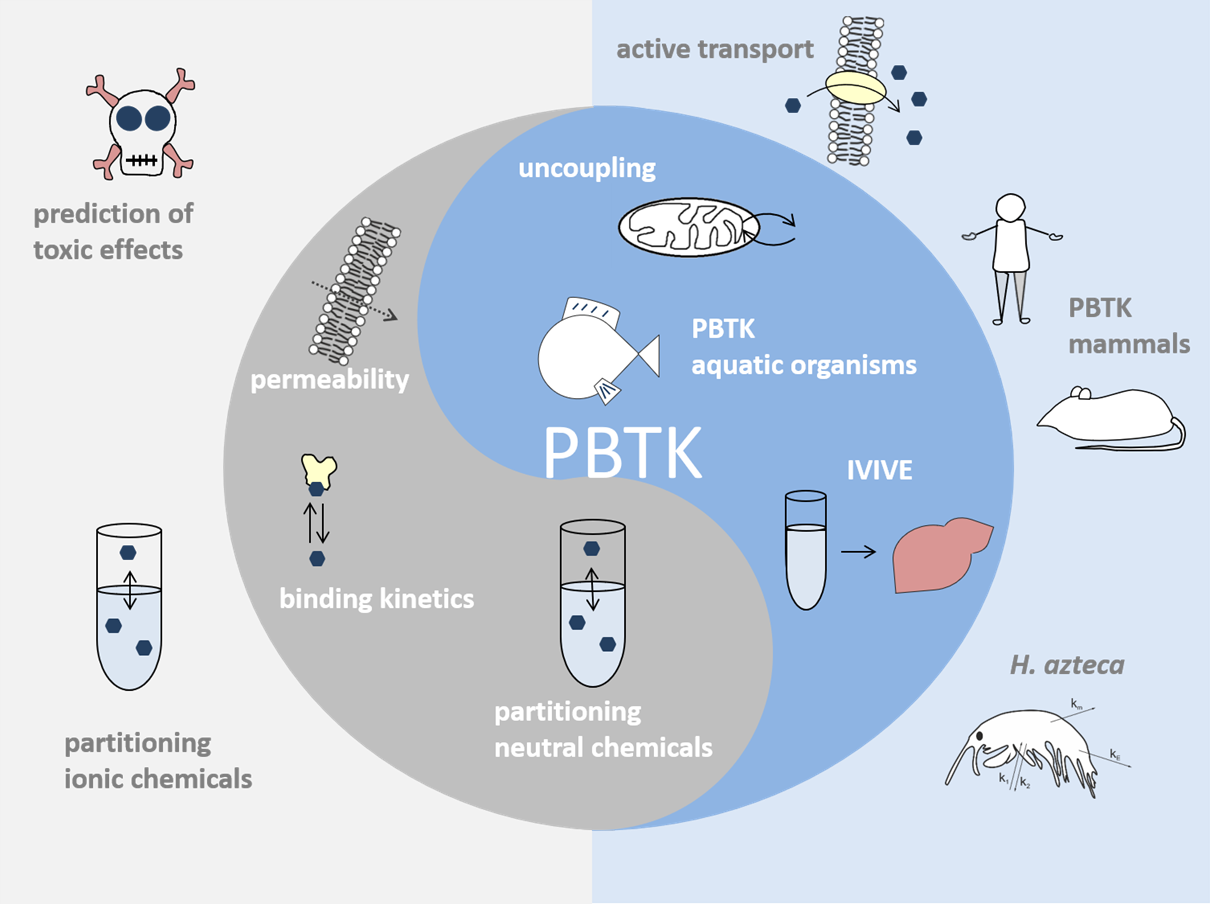Toxicokinetic Modeling

To what extent do organisms take up chemicals from their environment via food, air, or water? In which organs do such chemicals accumulate, and how are they metabolized and excreted? What is the interplay of all these processes, and what does that mean for the toxicity and bioaccumulation of these chemicals? What differences are there between species? How do we design experimental test systems that allow us to learn more about these questions without using animals?
Tens of thousands of chemicals must be assessed concerning their environmental behavior and toxicity as part of their registration procedure. This is labor-intensive and expensive, requiring animal-based tests in many cases. Despite all this effort, uncertainties in the assessment often remain. We aim to avoid animal testing and optimize and simplify the assessment procedure with an improved mechanistic understanding of the processes.
Through experiments, we try to understand better how the molecular structure of a chemical influences its physical-chemical properties, e.g., its sorption to proteins or lipids or its active and passive permeability through cell membranes. This knowledge is then used to develop predictive tools for these properties. All this detailed information is incorporated into sophisticated mathematical models for describing the fate of chemicals in aquatic and terrestrial organisms. These models can help to elucidate and predict toxic mechanisms. Besides physiologically based toxicokinetic models (PBTK), this also involves developing in vitro - in vivo extrapolation tools, which allow the transfer of in vitro results on toxic effects or metabolism to whole organisms.
Our work aims to make the effect of chemicals in organisms predictable based on the molecular structure of the chemicals and using detailed physiological information for the organism concerned. Employing a tiered approach that combines experimental techniques and modeling, we strive to obtain maximum information with affordable effort.
